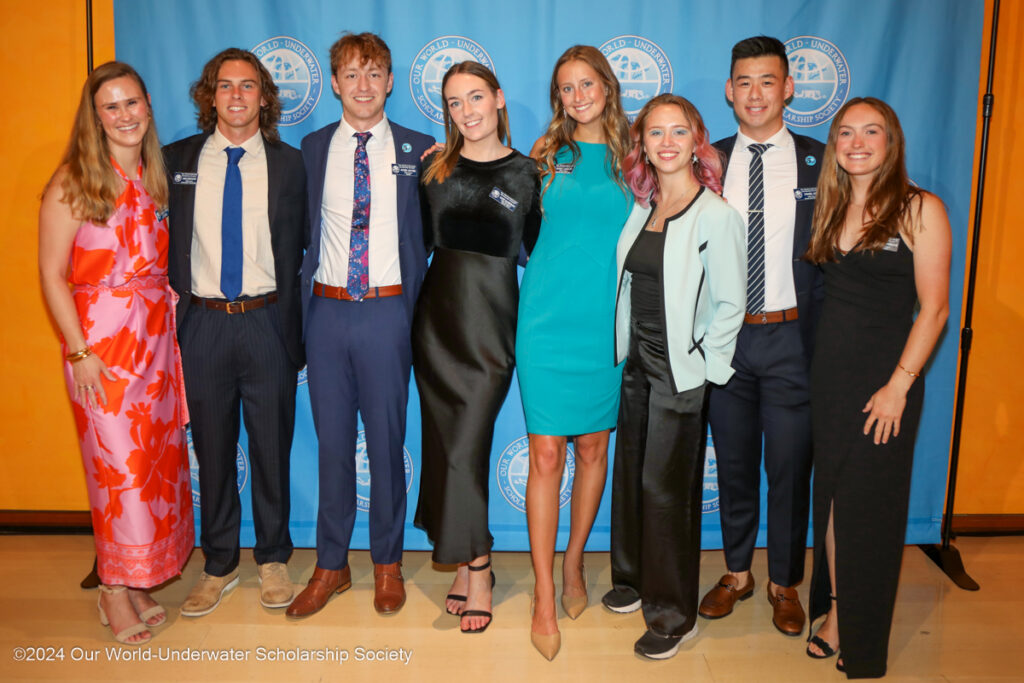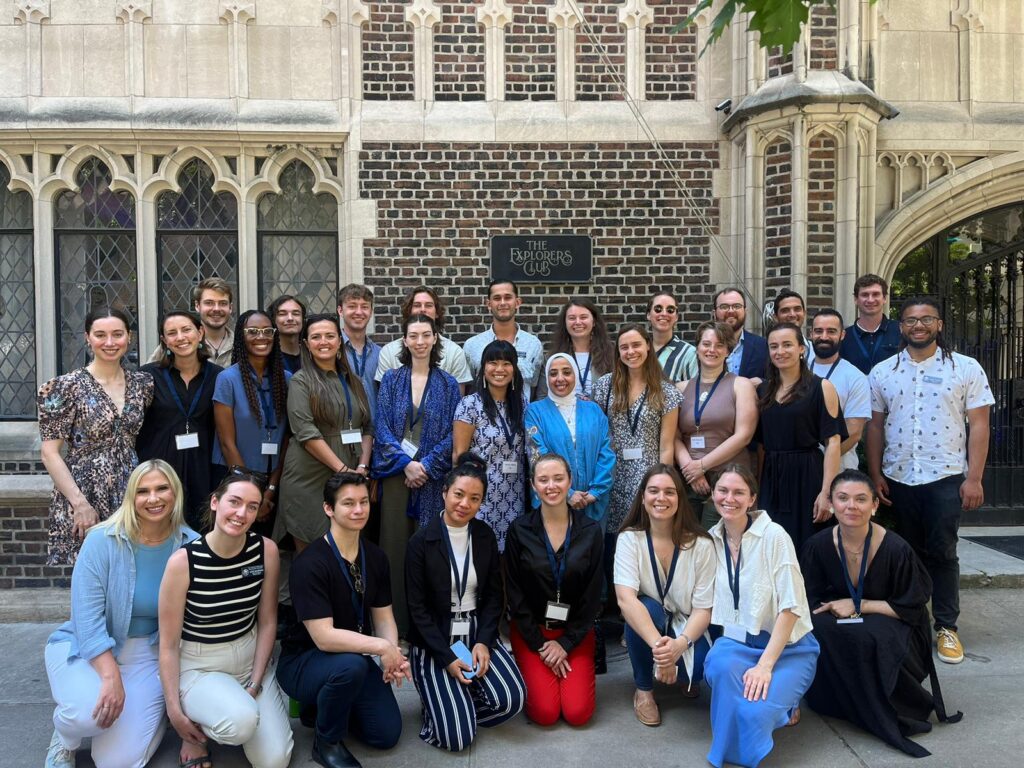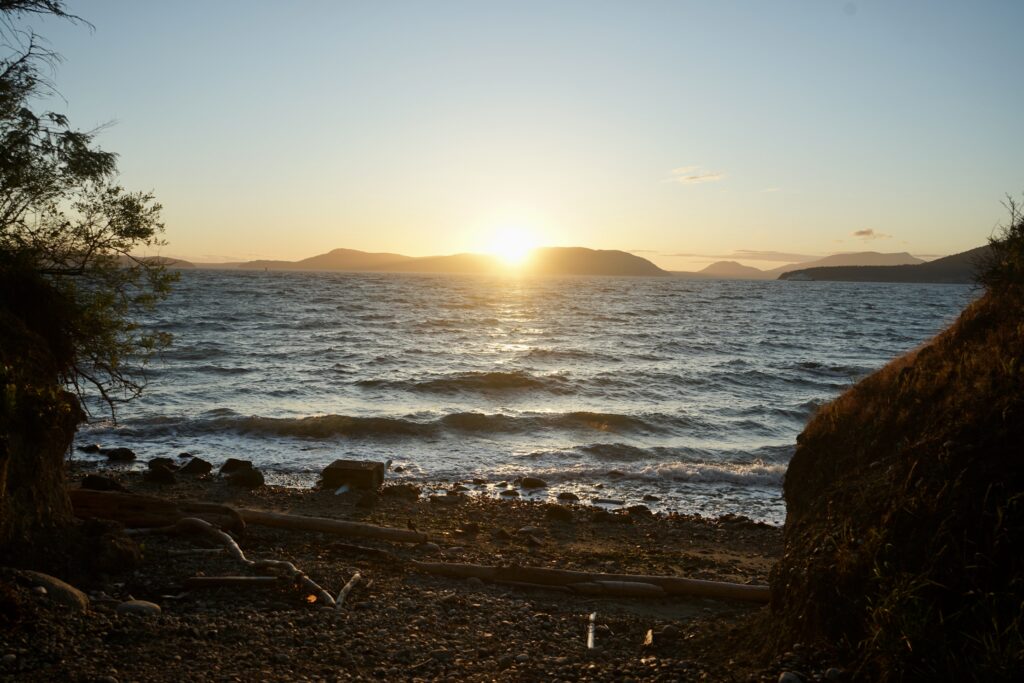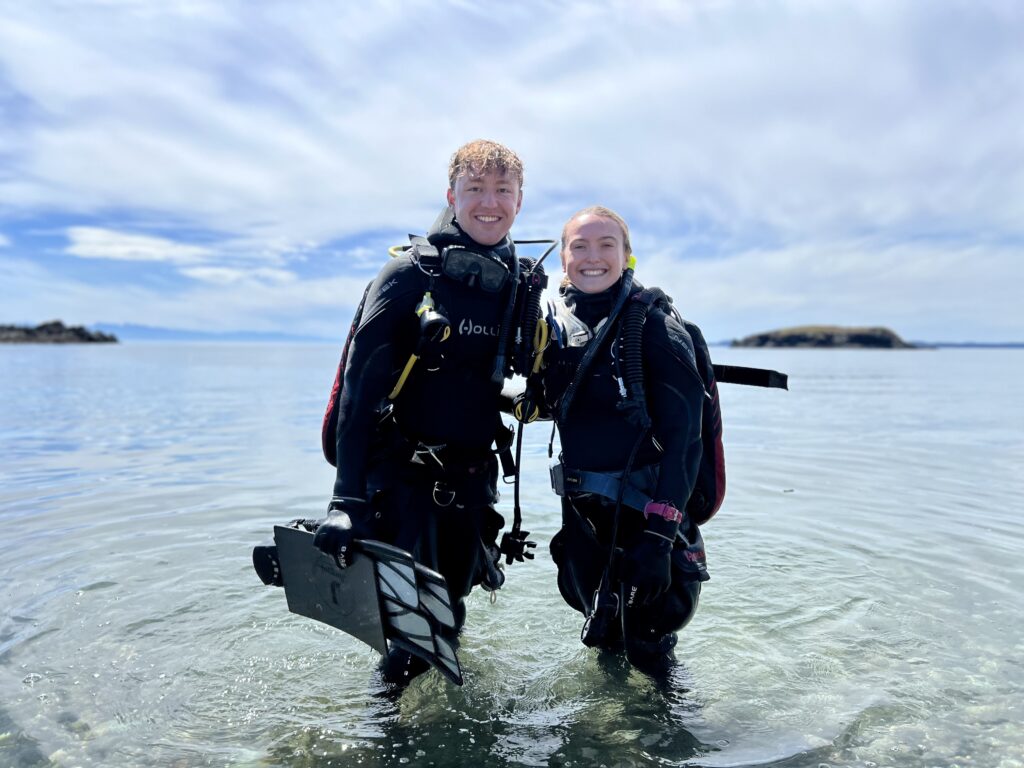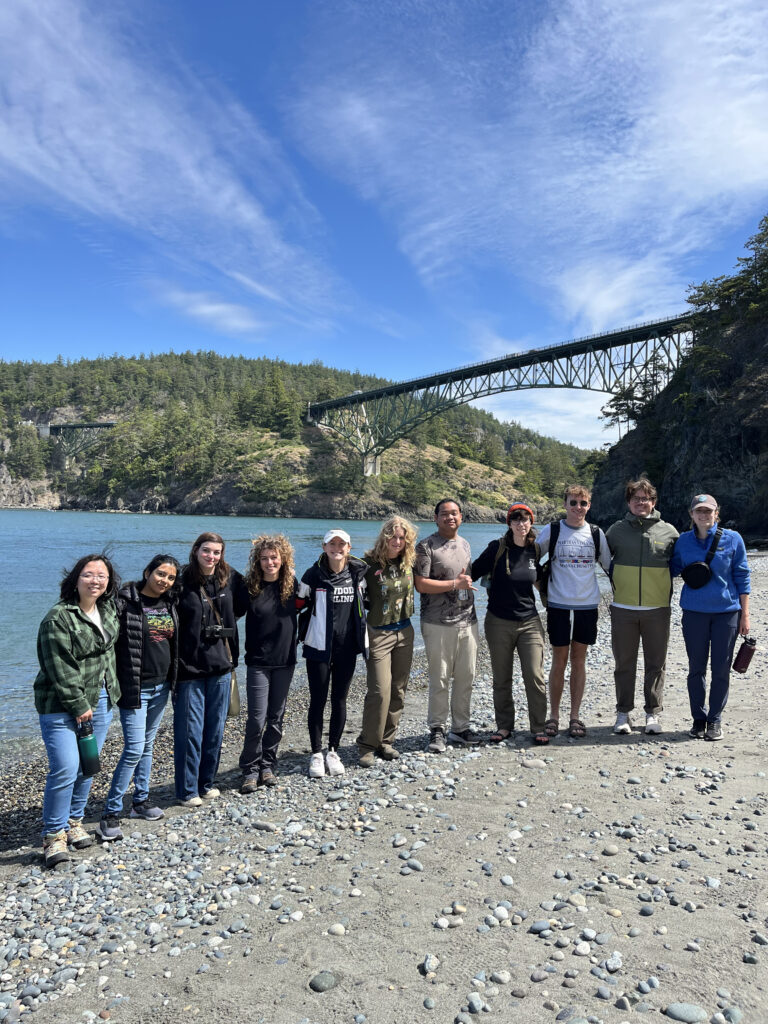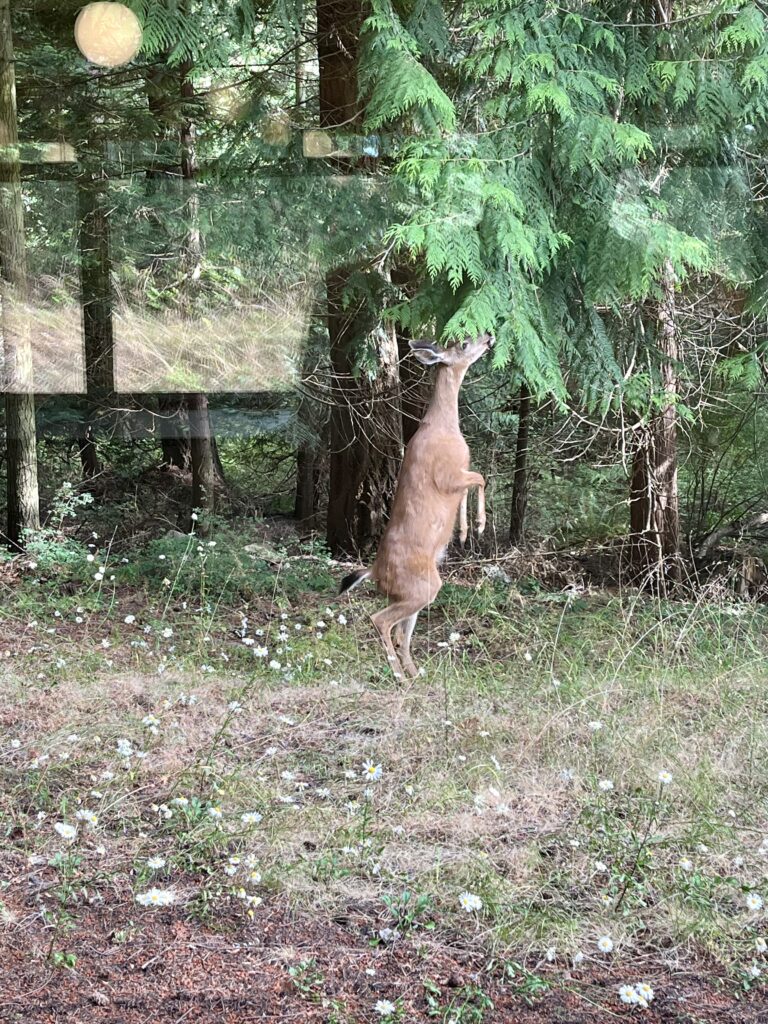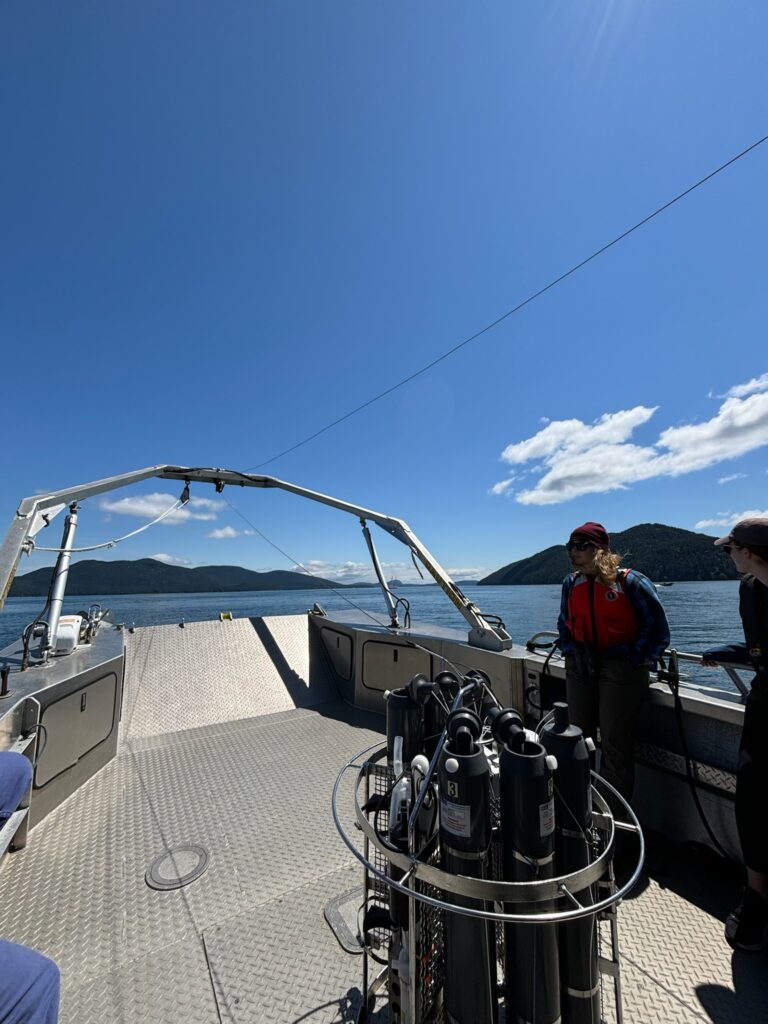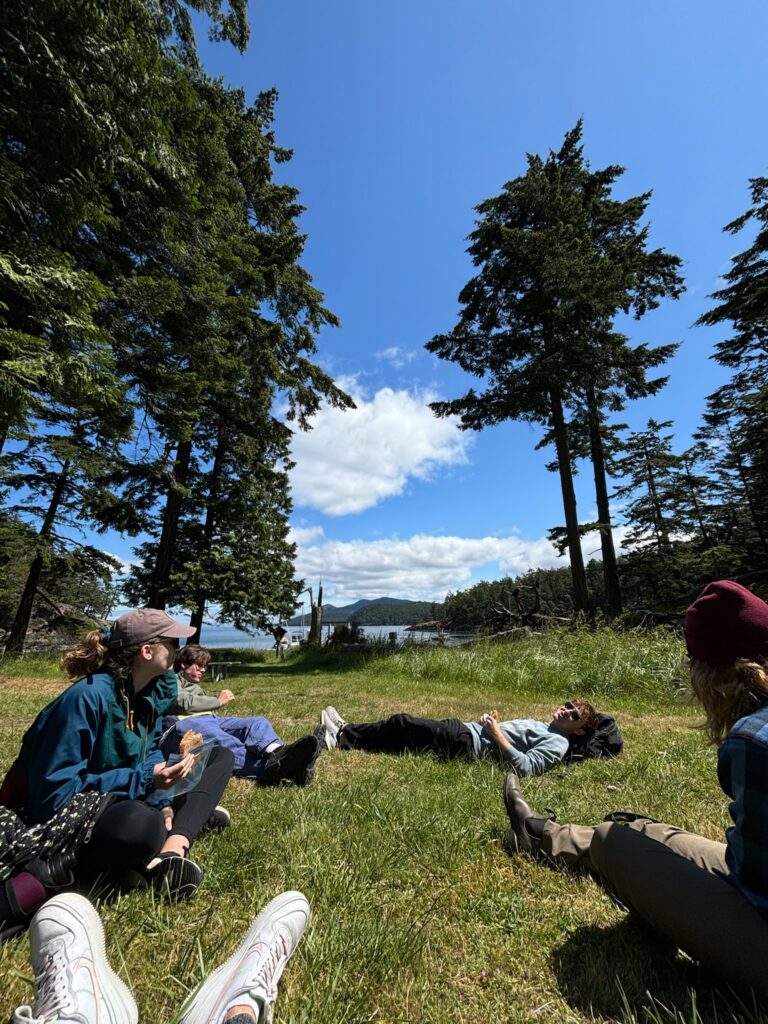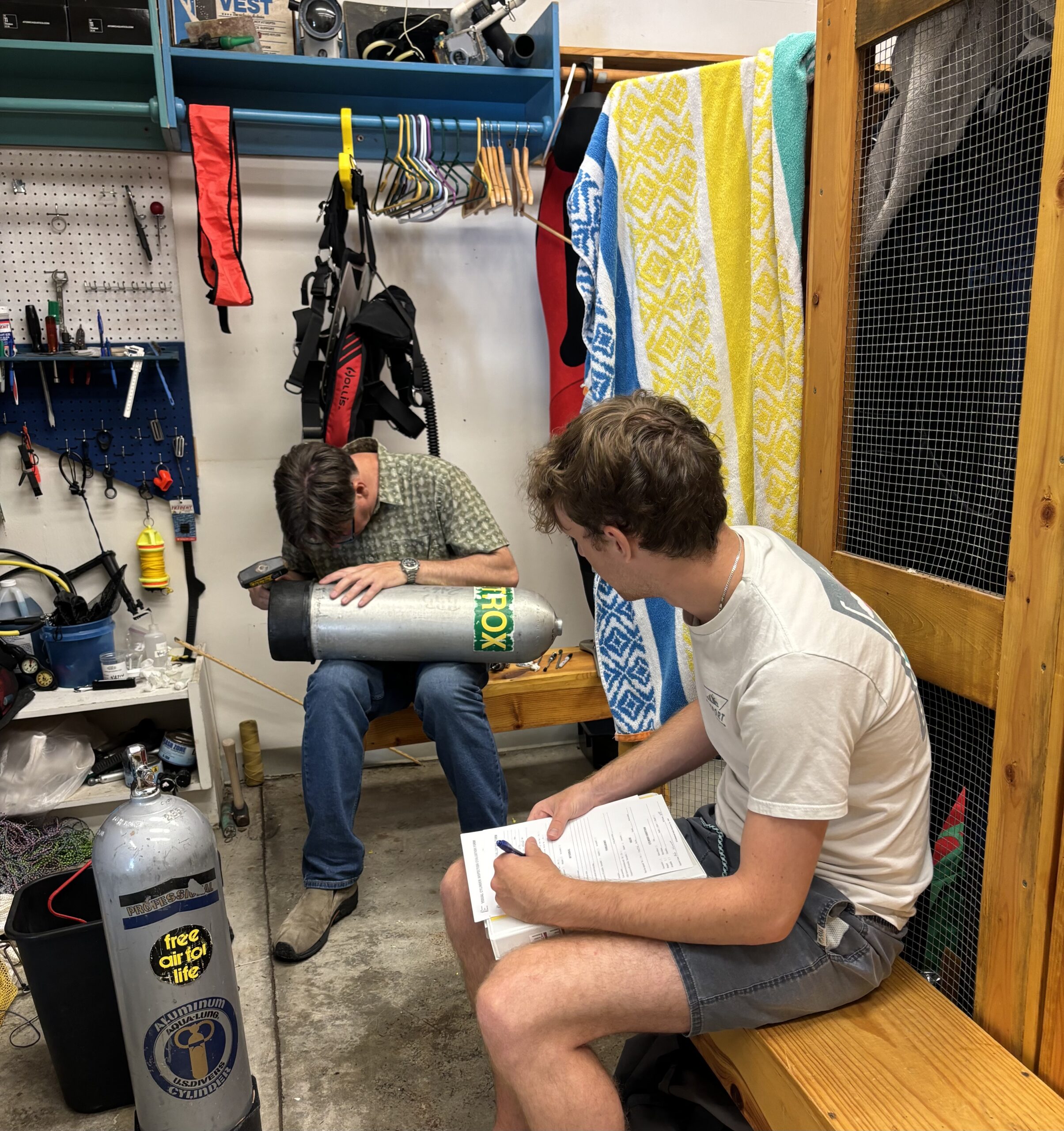A dive into this summers projects
One of the first projects I got to work on this summer was for the Cypress Island Aquatic Reserve where we were deploying artificial reef modules (ARMs). These reef modules were deployed on the south end of Cypress island and will remain there for a full year until they are collected and the growth on them is recorded. While we waited for the tides to hit slack, some of the REU interns took the chance to get in the water with us.

Waiting for the tides to hit slack, photos by Larkin Garden

Getting ready to deploy the ARMS
Another project that I worked on was on sea pens. This was a capstone project for Katie Shaw, one of the divers in the scientific dive class. She is working on developing a long-term dataset on sea pen populations. For the summer, we worked to to get initial population estimates and an idea of their special arrangements. This site was often a challenge to find due to strong currents and the site boundaries coming undone, but we were able to fix them and collect the data.

Sea pens. Photo by Larkin Garden
Out-planting
The biggest project I had the chance to work on this summer was with the REU diving interns. Partnering with Puget Sound Restoration Fund and NOAA to reintroduce Pinto abalone (Haliotis kamtschatkana) whose population has been declining and is listed as an endangered species. This project began with us driving out to pick up just over 500 juvenile abalone from the NOAA hatchery to prepare them to be introduced to the wild.

AAUS and diving REU interns at NOAA hatchery collecting abalone
Once we had them, we had to measure and place bee tags on them for future studies. This was a tedious process because the number tags are around 2.2 mm and the abalone wouldn’t stop dancing. Tagging and measuring all of them took around 5 hours of lab work which had me looking forward to the next part of the experiment that wasn’t in the lab.

To give an idea of how small these tags were
The final part of the study was a 24 hour survey where divers went in every hour to count the number of abalone that had left the tubes. This was the big day for us this summer where we were finally beginning to collect data for this project.

5AM start to the day loading up the boat. Photo by Teagan Cunningham

REU Ana counting the abalone. Photo by Larkin Garden

AAUS interns after their first abalone dive of the day
After 16 hours of being out at the site, we decided to cut the study short due to the abalone not leaving the tubes. We then decided to get some sleep before we went out at 9 the next morning to count again. We would then check the out-planting site every day for the next week until there was finally no more abalone inside the tubes.
Taking a break from the class, Derek and Nate decided to take us out for a fun dive out at Turn Island. This was a dive where I would get to see another species on my bucket list, a Giant pacific octopus.

Jason Love and I exploring Turn Island
While staying at Shannon point, Teagan and I were invited to dinner with the 1999 OWUSS scholar Julie and her husband Jay. This was a nice chance to hear some amazing stories from them and have some amazing food.

Julie Barber, Teagan Cunningham, and myself
While on our way to watch REU presentations at Friday Harbor Lab, Larkin, Ana, Teagan and I got the chance to dive with Derek at Lime Kiln lighthouse state park. Here, we worked with Dr. Jason Wood and SMRU by deploying an acoustic release, uncrossing some cables, and moving a hydrophone. Some unique challenges we faced on this dive was a rough entry site and some strong current, but it was still an amazing dive and super cool to help on such an interesting project.

Acoustic release we deployed
Taking a break from the murky water of the Salish Sea, we took a trip up to lake Whatcom and got to enjoy some amazing visibility and help clean up some trash from the lake.
Lake Whatcom’s clear water and the trash we removed
Before we all left Washington, we got the chance to try a blue water rig dive. This was something I wasn’t expecting us to do but it was an interesting opportunity and a new skill
The blue water rig ready to be deployed
Sadly, due to the visibility we weren’t able to see much on this dive but it was a good way to practice our communication skills and buoyancy.

Captain Nathan Schwarck, myself, Teagan Cunningham, and Dr. Derek Smith

SPMC diving residents Teagan, myself, Ana, and Larkin
While I am sad that my internship has ended, I couldn’t be more grateful for the amazing summer I have had. Thank you to AAUS and OWUSS for such an unforgettable experience. I also want to thank Derek and Nate for putting in so much work to make the summer go as well as it did. Finally, I want to thank the SPMC dive team Teagan, Larkin, and Ana who were an integral part in making this summer so special. I look forward to presenting at the 2025 annual meeting and look forward to seeing everyone again


